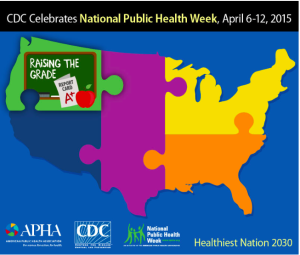Transparency is extremely important to us, so we are letting you know that we may receive a commission on some of links you click on from this page. See our disclaimer.
 In our continuing coverage of National Public Health Week, today we bring the NPHW focus: Building Broader Communities.
In our continuing coverage of National Public Health Week, today we bring the NPHW focus: Building Broader Communities.
The program's stated goal is to create the “Healthiest Nation in One Generation.” How does this relate to workplace wellness?
The NPHW and other public entities recognize that to improve our nation's health, we will need to connect public-private gaps. And much of that focus just may start in the workplace. As the NPHW writes, “The public health community must expand its partnerships to collaborate with city planners, education officials, public, private and for-profit organizations – everyone who impacts our health.”
The CDC Foundation states: “Public health is the science of protecting and improving the health of families and communities through detection and control of infectious diseases, research for disease and injury prevention, and the promotion of healthy lifestyles. Put simply, public health is concerned with protecting the health of populations. These populations can be as small as a local neighborhood, or as big as an entire country or region of the world.”
Examples cited by the NPHW include:
- “Individual workers, unions, employers, government agencies, scientists, state labor and health authorities, and others have worked together to make a significant difference in workplace conditions and safety, vastly reducing workplace injuries and death.”
- “Fighting Big Tobacco to reduce the prevalence of tobacco use in the U.S. would not have been possible without the combined efforts of a broad coalition of government officials, public health groups, scientists, economists, and educators.”
- “Public health action, together with scientific and technologic advances, have played a major role in reducing and in some cases eliminating the spread of infectious disease, and in establishing today’s disease surveillance and control systems.”
- “Reducing death and injury attributable to motor vehicles has required an all-hands-on-deck approach.”
